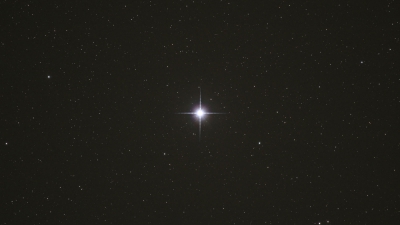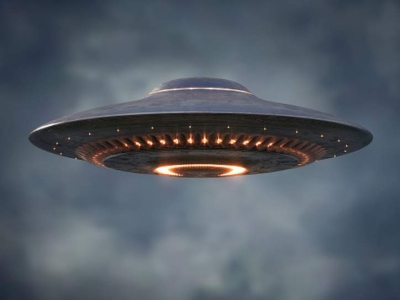WHICH STAR BECAME THE FIRST STAR OTHER THAN OUR SUN TO BE PHOTOGRAPHED?

Vega became the first star other than our sun to be photographed. Visible in the summer sky of the northern hemisphere, Vega is a bright star located about 25 light years from our Earth. On July 16-17, 1850, The days when we could look up to see star-studded skies feel like they are numbered. Especially in cities, as the light pollution makes it impossible for us to enjoy the celestial show. Some stars, however, shine bright enough such that they can be seen even on a moonlit night or from light-polluted cities.
Vega is one such star visible in the summer sky of the northern hemisphere. The brightest star in the constellation Lyra, it is also known as Alpha Lyrae. The fifth-brightest star visible from Earth, it is also among the closest of all bright stars at about 25 light years away.
The Summer Triangle
Along with two other stars - the distant Deneb and the fast-spinning Altair-the blue-white Vega forms an asterism known as the Summer Triangle. These three stars are usually the first to light up the eastern half of the sky after sunset.
Beginning around June and until the end of the year the Summer Triangle pattern can be discerned in the evening every day. Vega, which sinks below the horizon for just seven hours each day, can actually be seen on any day of the year. At mid-northern latitudes on midsummer nights, Vega is usually directly overhead.
The blue-white light of Vega is so bright that it has been observed through the centuries. Be it the Hindus, Chinese, or the Polynesians, the star features prominently in many ancient cultures. Its name, meanwhile, comes from the Arabic word wagi, which means "falling" or "swooping"
First to be photographed
The brightness has meant that Vega has remained relevant in modern times as well, notching up a number of firsts. The first of those firsts came in 1850, when Vega became the first star to be photographed, other than our sun.
On July 16-17, 1850, a 15-inch (38 cm) refractor at the Harvard College Observatory was employed to capture it. Harvard's first astronomer, William Cranch Bond, had been dabbling with celestial photography at the behest of John Adams Whipple, an American inventor and photographer. Using the daguerreotype process, the duo achieved a 90-second exposure of Vega that yielded the first photograph of a star other than our own. Bond and Whipple, in fact, kept at it and their daguerreotype of the moon the next year created quite a stir at the international exhibition held in London's Crystal Palace.
Spectrum of a star
A couple of decades later, Vega was again central to another first. Henry Draper, an American doctor and amateur astronomer, was a pioneer in astrophotography. He chose Vega as his subject when he created the first spectrographic image of the star in 1872. Breaking down Vega's light to reveal the various elements making up the star, Draper had taken the first spectrum of a star other than our sun.
Late in the 1990s, Vega rose to prominence once again after American astronomer Carl Sagan's novel "Contact" was made into a Hollywood movie. As the movie showed an astronomer discovering a signal appearing to come from Vega while searching for extraterrestrial intelligence, the star captured popular imagination.
Vega's blue-white light indicates surface temperatures of about 9,400 degree Celsius, much hotter than that of our sun (4,000 degree Celsius). Vega's diameter is nearly 2.5 times that of the sun, while its mass is also more than twice that of our sun.
Vega is only about 450 million years old, making it a youngster when compared to our sun, which is 4.6 billion years old. Despite Vega being a 10th of the sun's age, both stars are classified as middle-aged as they are halfway through their respective lives. This means that while our sun will run out of fuel only after another 5 billion years, Vega will burn for only another half-a-billion years.
Picture Credit : Google
